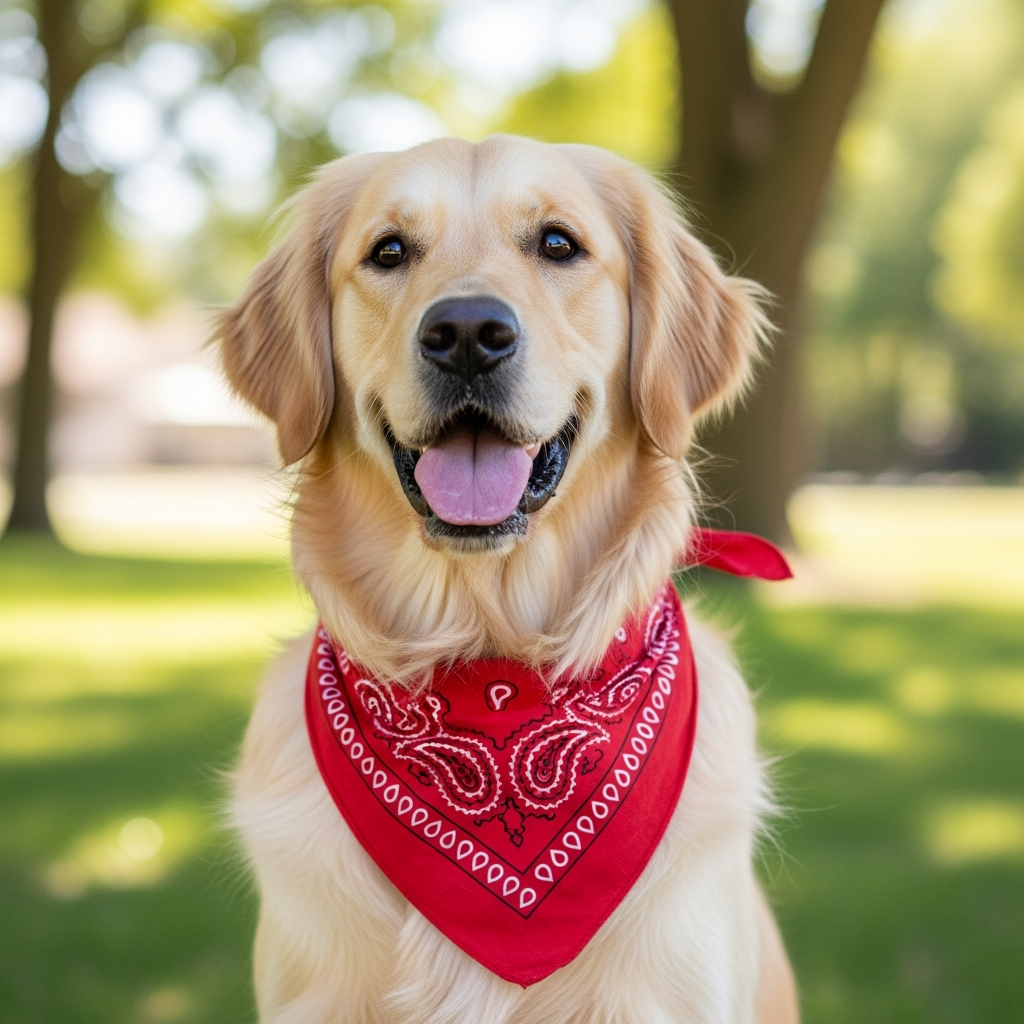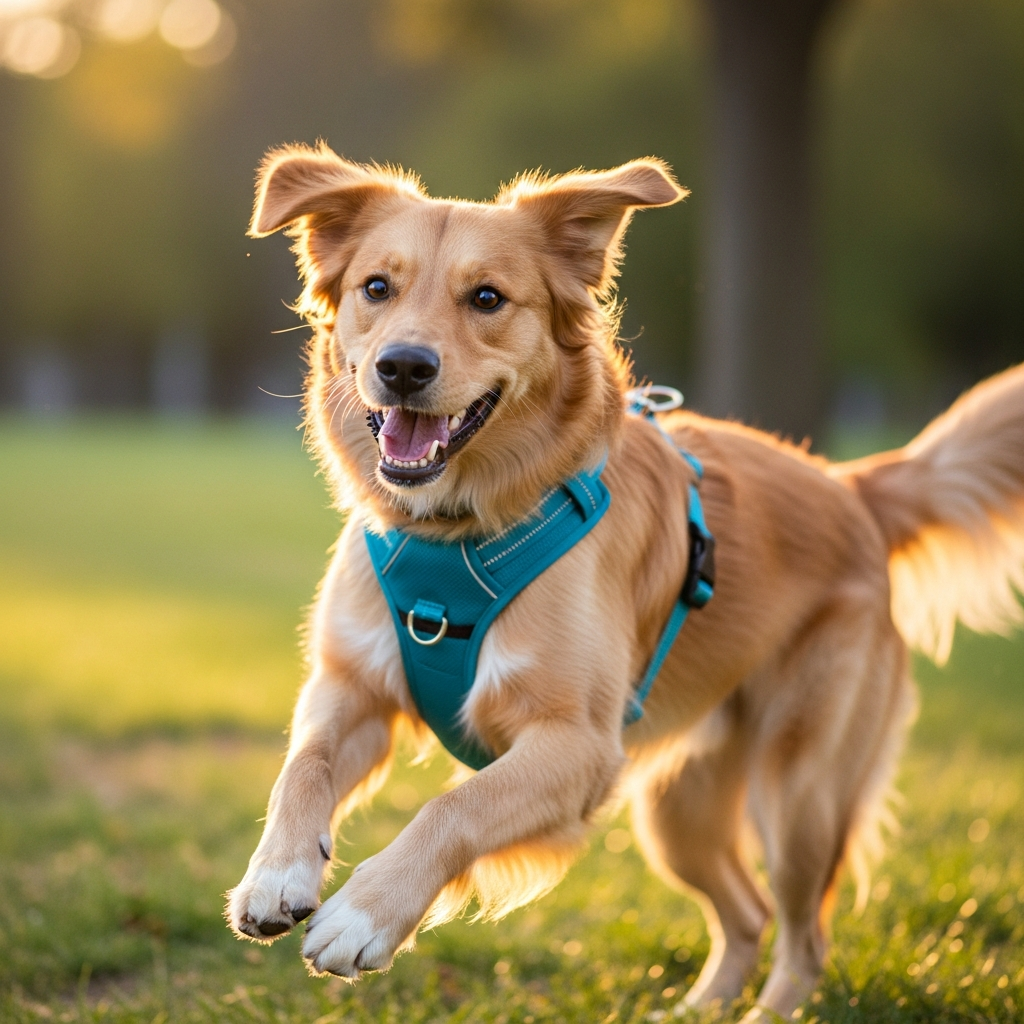Are your arms sore from walking your powerful dog? It can turn a pleasant stroll into a stressful tug-of-war, making you dread going outside. A proper harness is the solution.
The best harness for a big dog that pulls is a no-pull design featuring a front D-ring for leash attachment. This design redirects your dog’s forward momentum, discouraging pulling without causing discomfort. Look for durable materials, wide straps, and multiple adjustment points for a secure and comfortable fit.
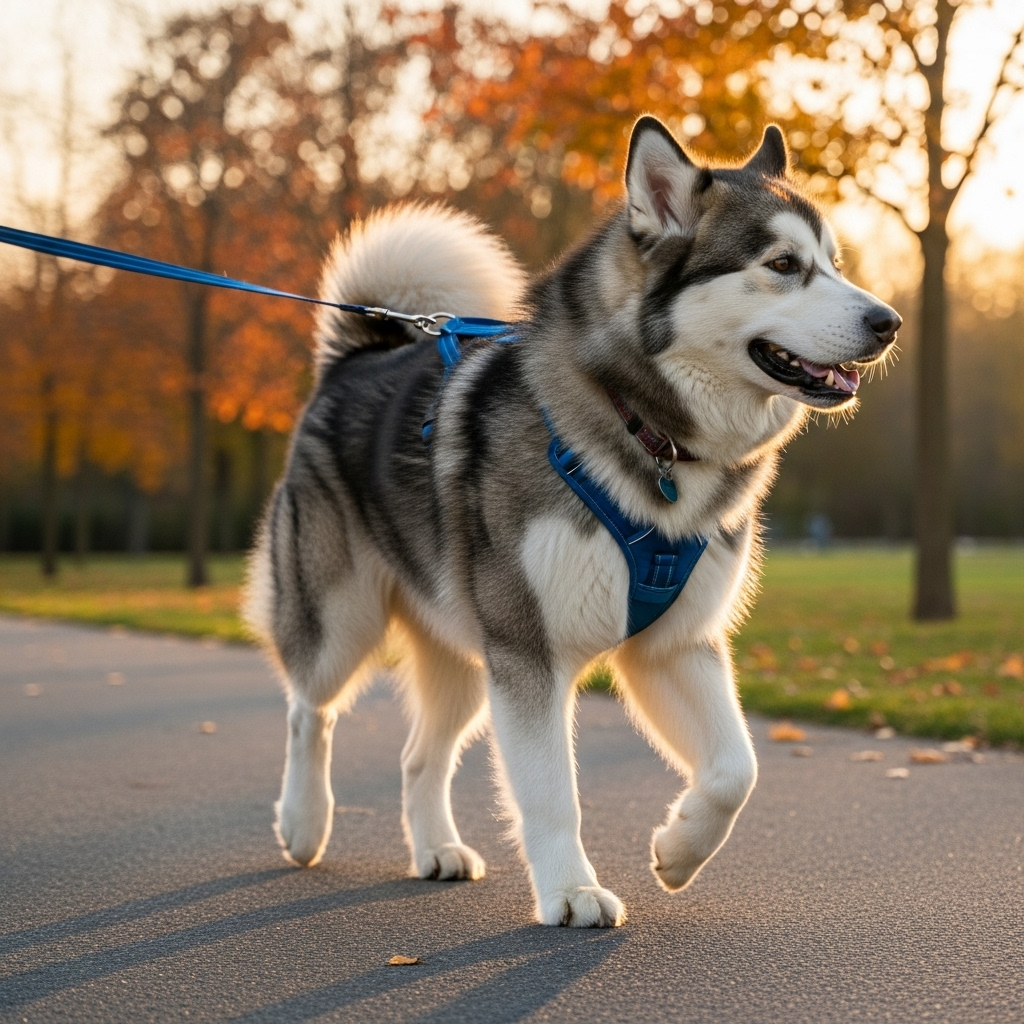
Finding the right dog harness is a huge first step. As a product designer in the pet industry, I've seen how the right equipment can completely change the dynamic between a dog and its owner. But a tool is only as good as the technique used with it. You need more than just a harness; you need a strategy. Let’s explore how to combine the best gear with effective training to finally enjoy those walks again.
How do I stop my large dog from pulling?
Are you tired of your arm feeling like it's being pulled from its socket? This constant battle of wills can make training feel frustrating for both you and your dog.
You can stop a large dog from pulling by using a front-clip dog harness combined with positive reinforcement training. When the leash tightens, immediately stop walking. Only move forward again when your dog returns to you and the leash is slack. Reward this calm behavior with praise.
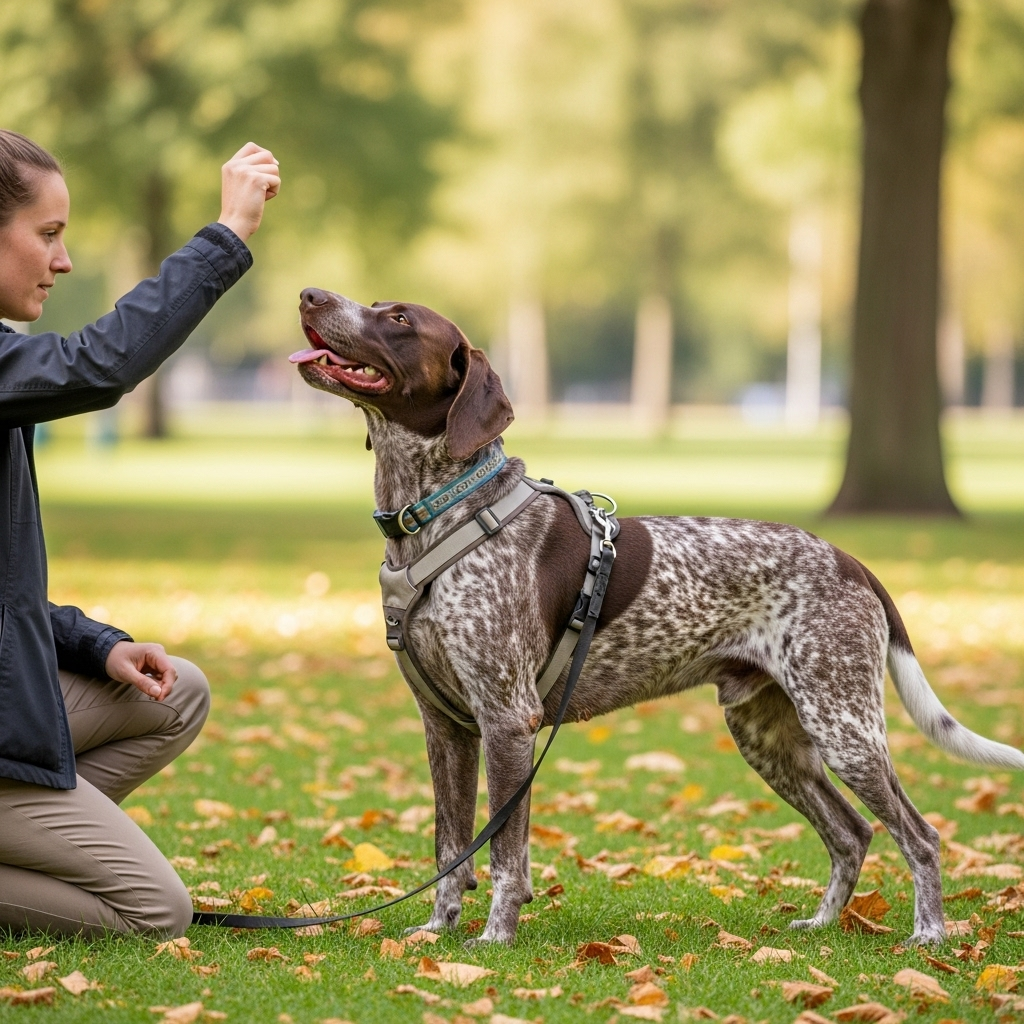
Stopping pulling is about teaching your dog that a loose leash is the only way to move forward. It’s a partnership between the right equipment and consistent training. I've designed countless dog harnesses, and I know that even the best design needs a human partner to make it work.
The Gear and The Method
The most effective approach combines a front-clip harness with a simple, repeatable training exercise. The front-clip dog harness is your primary tool. When your dog pulls, the leash gently turns them back toward you, making it difficult and unrewarding to forge ahead. This redirection is key.
Next is the training. It's often called the "Be a Tree" method.
- Start walking with your dog on a loose leash.
- The instant you feel the leash tighten, stop moving. Stand still and silent.
- Wait. Your dog will eventually look back or move toward you to see why you've stopped.
- The moment the leash goes slack, praise your dog enthusiastically and begin walking again.
This process teaches a clear lesson: Pulling stops the fun, while walking politely keeps it going. Consistency is everything. Every single time your dog pulls, you must stop.
What is the best device to stop a dog from pulling?
Feeling overwhelmed by the sheer number of anti-pull devices on the shelf? Choosing the wrong one can be a waste of money and, in some cases, can even harm your dog.
The most effective and humane devices to stop a dog from pulling are front-clip harnesses and head halters. A front-clip harness redirects the dog’s body, while a head halter provides control over the head's direction. Both are superior to aversive tools like choke or prong collars.
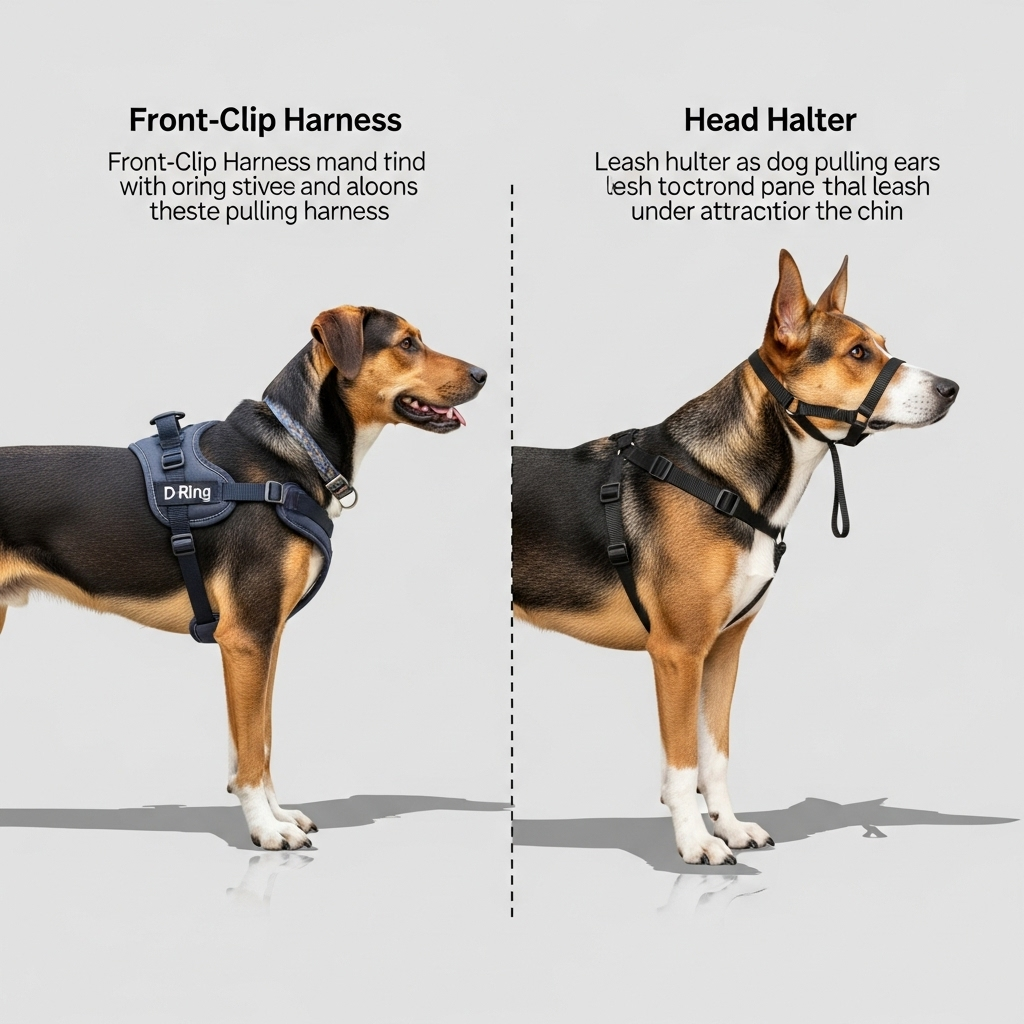
In my work helping brands develop new pet products, we always prioritize the dog's safety and well-being. The goal is to manage a behavior, not to punish the animal. The device you choose should guide your dog into the correct behavior gently. Let’s compare the top options so you can make an informed choice for your specific situation.
Comparing Anti-Pull Tools
Different devices work in different ways, and the best choice depends on your dog's size, temperament, and the severity of the pulling. Here’s a breakdown of the most common options I encounter in my design consultancy.
| Device | How It Works | Best For | Considerations |
|---|---|---|---|
| Front-Clip Harness | Leash attaches at the chest, redirecting the dog's momentum sideways when they pull. | Most dogs, especially strong pullers. It's a great all-around training tool. | Fit is critical to prevent chafing and ensure it works correctly. |
| Head Halter | Works like a horse's halter. A strap goes over the muzzle, and where the head goes, the body follows. | Very strong or reactive dogs where maximum control is needed. | Requires careful introduction so the dog accepts it. Can be mistaken for a muzzle. |
| Back-Clip Harness | Leash attaches on the back. This is the most common harness style. | Dogs that do not pull. It provides no anti-pull benefit. | Can actually encourage pulling by engaging a dog's natural opposition reflex. |
| Prong/Choke Collar | Tightens or puts pressure on the neck when the dog pulls. | Not Recommended. | These are aversive tools that rely on pain and can cause physical and psychological damage. |
From a design and safety perspective, I always guide clients toward front-clip harnesses as the first and best option. They provide excellent control without applying any pressure to the dog's sensitive neck area.
Which dog harness is best for anti-pulling?
You know you need an anti-pull dog harness, but they all seem to have different straps and clips. It’s hard to tell which features are gimmicks and which ones actually work.
The best anti-pull dog harness features both a front D-ring for pull-correction and a back D-ring for relaxed walking. A Y-shaped design across the chest allows for natural shoulder movement, while multiple adjustment points ensure a secure, comfortable fit that won’t chafe or restrict your dog.
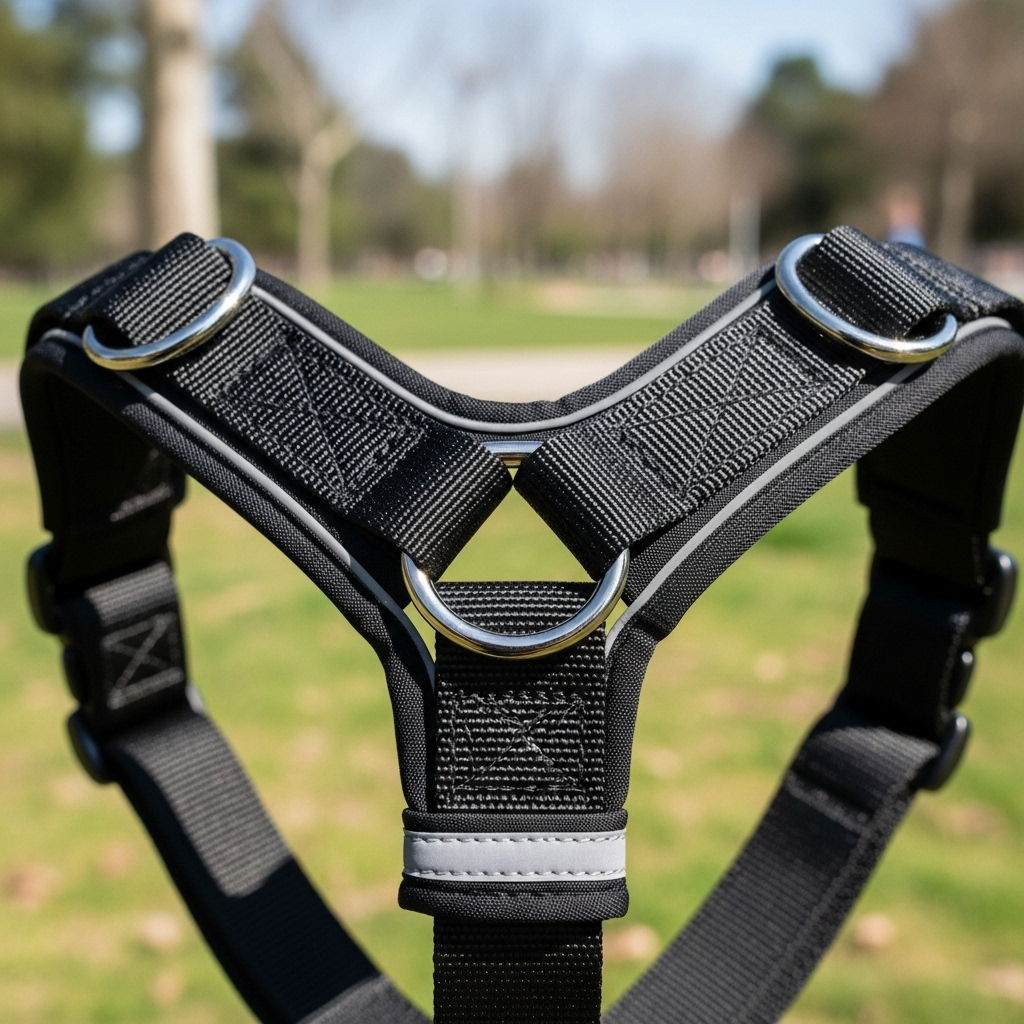
When my team and I consult on a new dog harness design, we focus on the anatomy of the dog and the physics of pulling. It's not just about stopping the behavior; it's about doing it safely and comfortably. A well-designed harness should feel like a secure piece of gear, not a restrictive trap. The details in the design are what make all the difference.
Key Design Features for Anti-Pull dog Harnesses
A truly effective anti-pull harness is more than just a collection of straps. Each component has a purpose. When you're evaluating a harness, look for these specific elements.
- Dual-Clip System: The most important feature is having two leash attachment points. The front D-ring is your training tool for redirecting pulling. The back D-ring is for times when your dog is walking calmly, for use with a long line, or for securing them in a car. This versatility is invaluable.
- Y-Shaped Chest Piece: Look for a design where the straps form a "Y" shape over the chest, coming down between the front legs. This setup sits on the dog's breastbone and prevents the harness from restricting their shoulder joints, allowing for a natural gait. Harnesses with a horizontal strap across the chest can impede movement.
- Multiple Adjustment Points: A good harness should have at least four, sometimes five, points of adjustment. This allows you to create a snug, custom fit that prevents the harness from shifting, which can cause chafing or allow a dog to escape.
- Durable Hardware: The buckles and D-rings are critical failure points. I always recommend designs that use strong metal D-rings, preferably welded, and heavy-duty plastic or metal buckles that can withstand the force of a large, pulling dog.
What type of dog harness is best for large dogs?
Are you worried that a standard dog harness just won't hold up to the strength of your large dog? A broken buckle or a torn strap is a safety nightmare you can't afford.
For large dogs, the best harness type is a heavy-duty, padded model made from robust materials like 1050D nylon or durable Oxford cloth. It must have wide straps to distribute pressure, strong hardware, and reinforced stitching at all stress points to ensure maximum security.
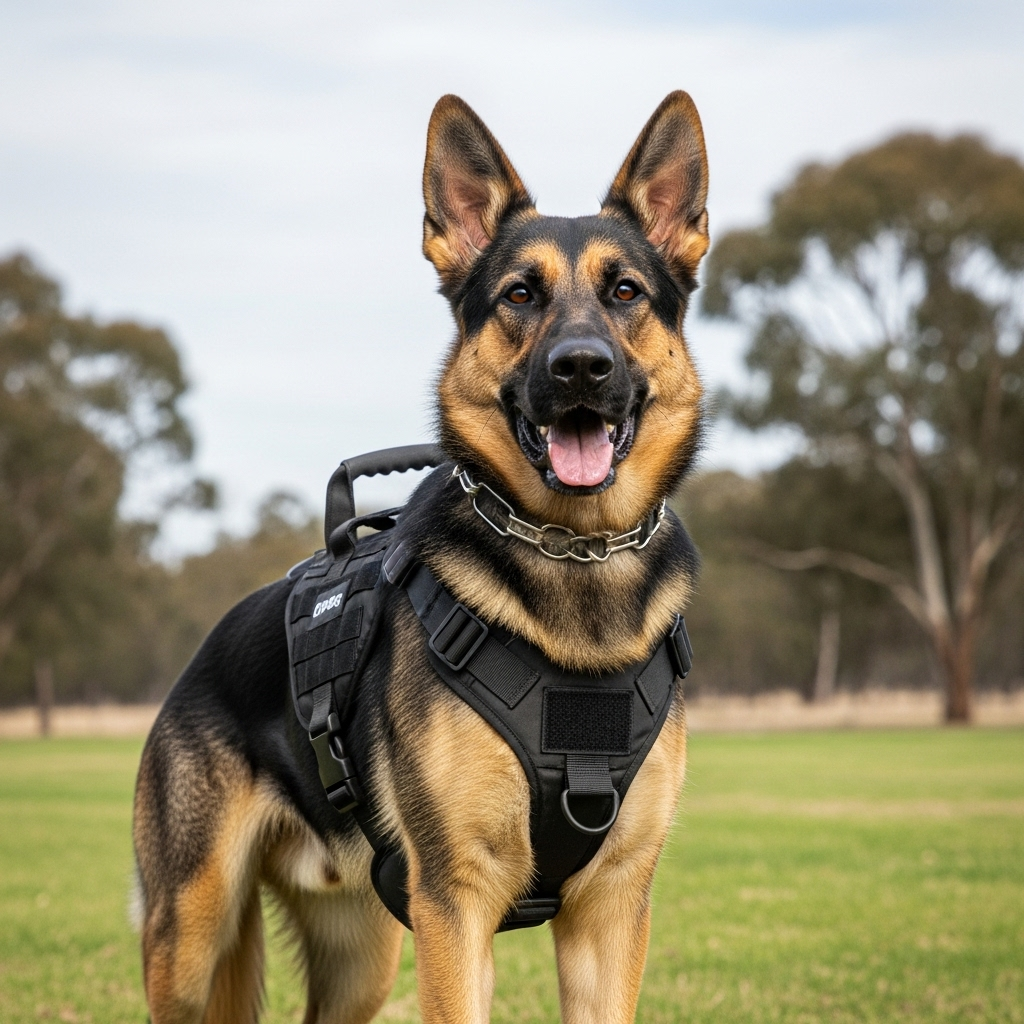
In my consulting work, creating products for large breeds is a special challenge. Everything has to be bigger, stronger, and more durable. We can't just scale up a design meant for a small dog. We have to re-engineer it from the ground up, considering the immense force these dogs can generate. This is where material science and construction techniques become absolutely critical for safety.
Material and Construction Checklist for Large Dog Harnesses
When you're choosing a dog harness for a big dog, you need to think like an engineer and inspect the quality of every component. Here’s what I look for when developing or recommending a product for a large breed.
| Component | Material & Specification | Why It Matters for Large Dogs |
|---|---|---|
| Main Fabric | 1050D Nylon or high-density Oxford cloth. | These fabrics have exceptional tensile strength and abrasion resistance, preventing tears even under extreme pulling force. |
| Padding | Soft neoprene or breathable mesh lining. | Large dogs have more weight, so padding is crucial to prevent chafing and distribute pressure comfortably across the chest and back. |
| Straps | Wide (1.5" or 2") nylon webbing. | Wider straps distribute pressure over a larger surface area, which is safer and more comfortable than thin straps that can dig in. |
| Buckles | Heavy-duty plastic (like UTX-Duraflex®) or metal cobra buckles. | This is often the weakest point. For giant breeds or extreme pullers, metal buckles offer the ultimate in security. |
| D-Rings | Welded stainless steel or aluminum alloy. | A non-welded D-ring can be pulled open by a strong dog. Welded rings provide a closed loop that cannot fail. |
| Stitching | Reinforced bar-tack stitching at all stress points. | Look for this dense, zig-zag stitching where straps connect to the body and around D-rings. It’s what holds everything together. |
At RAYSUNPETS, we help brands source these specific materials and offer OEM/ODM services to create unique products. This allows companies to build a truly heavy-duty harness with custom logos and features, like built-in LED lights for visibility, all with a low minimum order.
Conclusion
The best dog harness for a large, pulling dog is a no-pull design with robust materials. Combine this tool with consistent training for safe, enjoyable walks for both you and your dog.
Cindy Long is the Sales Manager of Raysunpets and a pet lover with over 12 years of experience in exporting pet products. She specializes in providing customized dog chest carriers, leashes and pet accessory solutions for the European and American markets, always focusing on the real needs of customers and pets, and is committed to creating high-quality, practical and comfortable products that allow fur kids to live happier lives.

